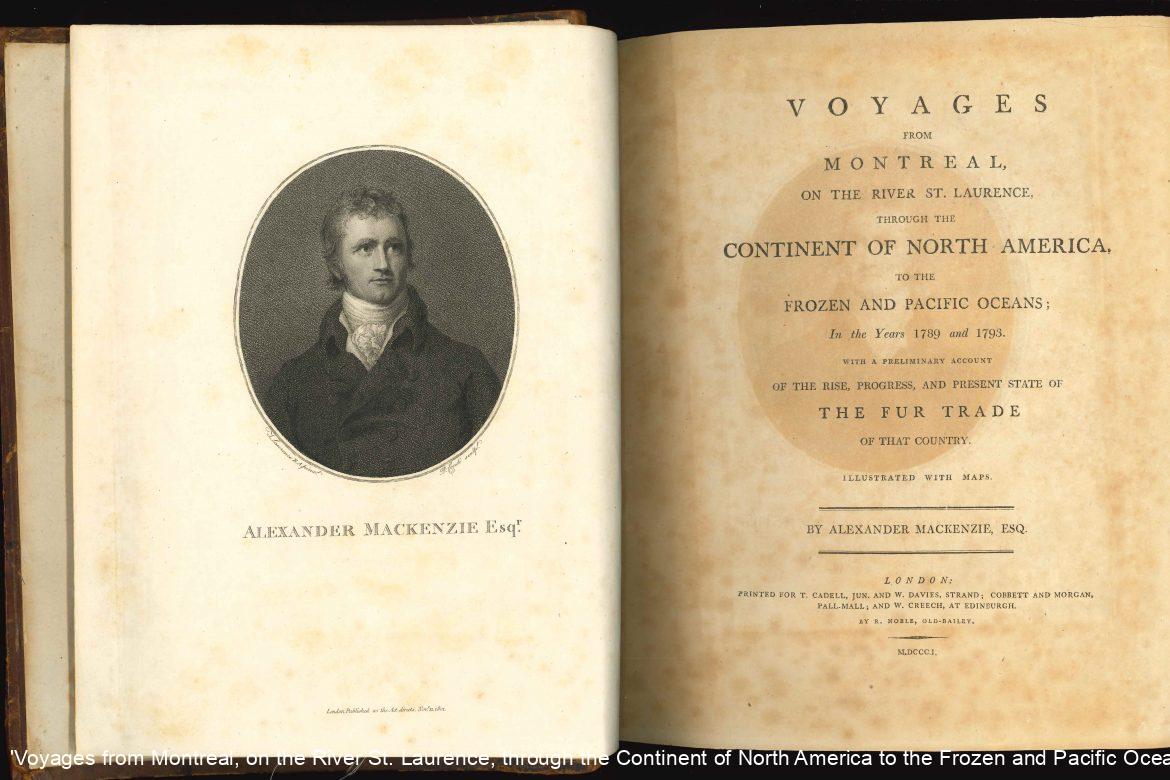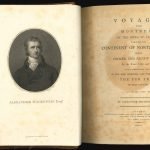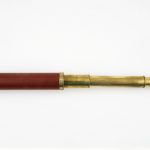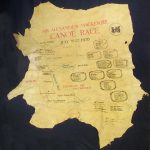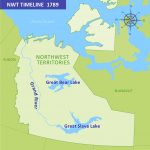1789
Alexander Mackenzie
In 1789, Alexander Mackenzie led an expedition down the great northern river, known by many different names to each of the Indigenous groups in the NWT.
Twenty-four-year-old Alexander Mackenzie became second in command at Peter Pond’s Fort Athabasca River fur trading post, 65 kilometres south of Lake Athabasca in northeast Alberta. In the spring of 1788, when Pond left the North, Mackenzie took over this North West Company post.
Thanks to the knowledge of the Indigenous peoples who traded at the Athabasca River post, Peter Pond had prepared a map that showed the Athabasca and Peace River joining to form the Slave River, which then flowed north into a large lake (Great Slave Lake). Pond initially believed the great northern river flowed west and eventually north to the Arctic Ocean; however, before leaving the North, Pond changed details on the map to show the great northern river discharging west from Great Slave Lake to the Pacific Ocean. This change contradicted the knowledge shared by the Indigenous people of the area.
In 1788, a new trading post named Fort Chipewyan was established on Lake Athabasca, and it was from this post that, on June 3, 1789, Mackenzie led a group to explore the river he called “Grand River.” If it were true that it flowed west to the Pacific, the North West Company would have a quicker and less costly route to the rich fur territory of the Northwest. At this time, competition for Northwestern furs was fierce.
Mackenzie’s exploration party of French-Canadian voyageurs also included a Dëne Sųłıné Chief named Awgeenah (also known as Nestabeck and English Chief) and various wives and helpers. The group travelled down the Slave River, crossed the still ice-choked Great Slave Lake, and down the “Grand River” (see map).
The downstream journey took only 14 days. It didn’t take long for Mackenzie to realize that Peter Pond’s map was wrong. The Grand River led to the Arctic Ocean, not the Pacific. The round trip of nearly 5,000 kilometres took a total of 102 days. Very few Dene were encountered on this expedition, perhaps because Dene fish at inland lakes at that time of year.
Sir John Franklin first used the name Mackenzie River in his journal, “Journey to the Shore of the Polar Sea” (London, 1823). In his 1828 journal, Franklin states, “In justice to the memory of Mackenzie, I hope the custom of calling this the Great River, which is in general use among the traders and voyagers, will be discontinued, and that the name of its eminent discoverer may be universally adopted.”
While the great river is known as the Mackenzie River in English, it also has official traditional Indigenous names:
- Dehcho means ‘big river’ in Dehcho Dene
- Deho means ‘great river’ in Sahtu Dene
- Grande Rivière, means ‘big river’ in Michif
- Nagwichoonjik means ‘big river’ in Gwich’in
- Kuukpak, means ‘big river’ in Inuvialuktun
The French name for Mackenzie River is Fleuve Mackenzie.
